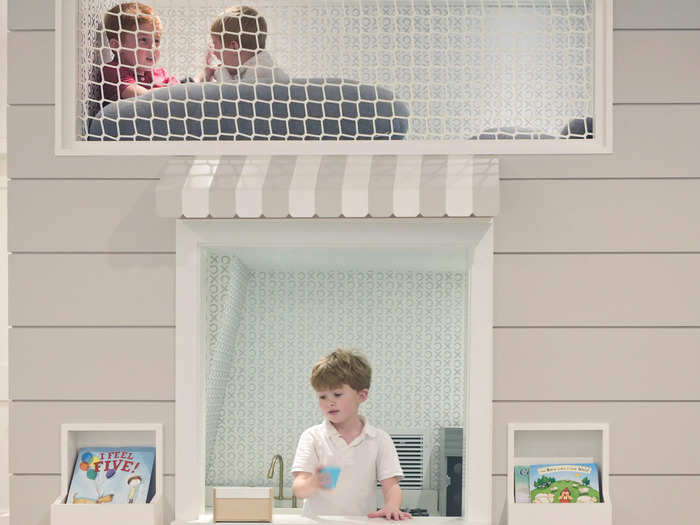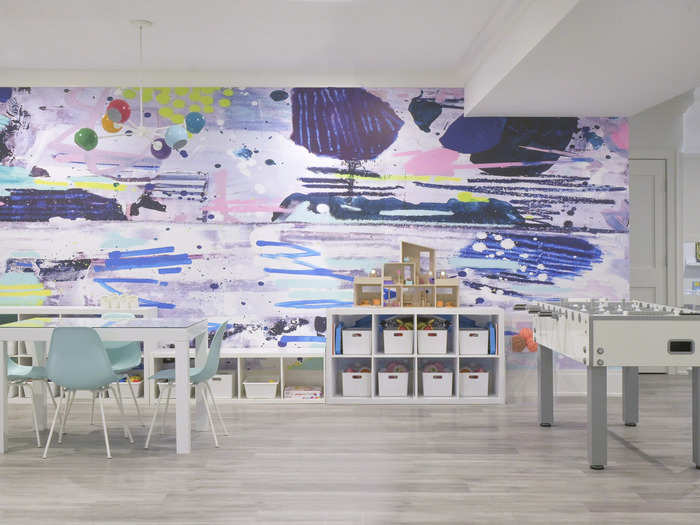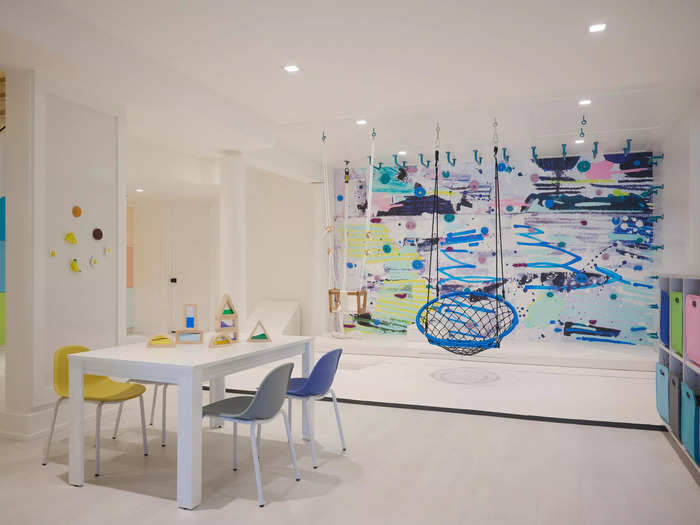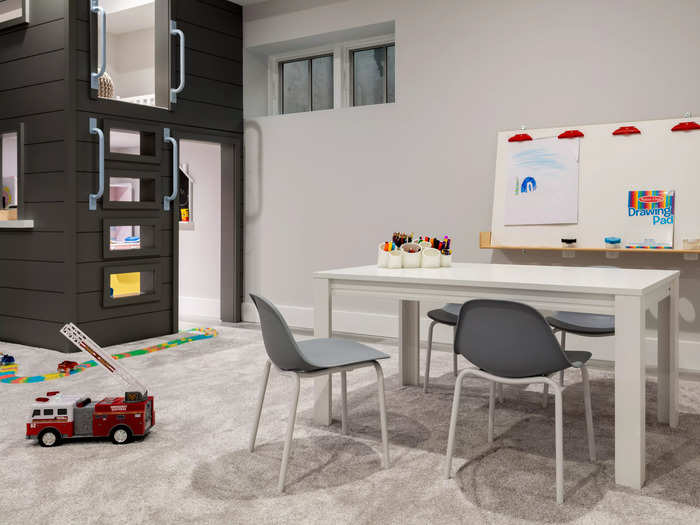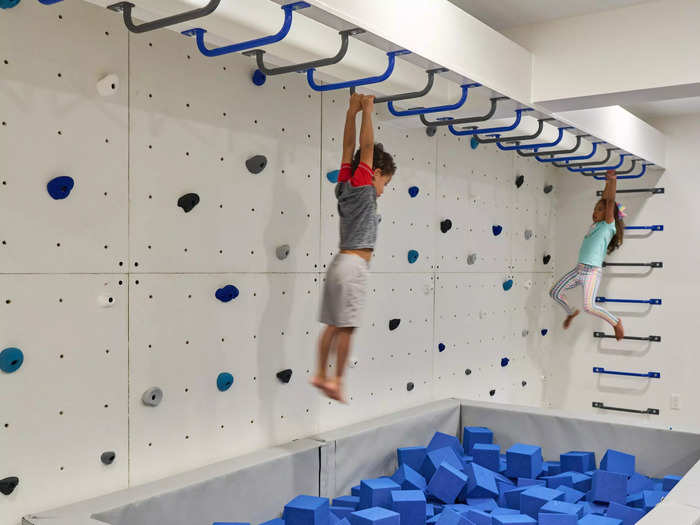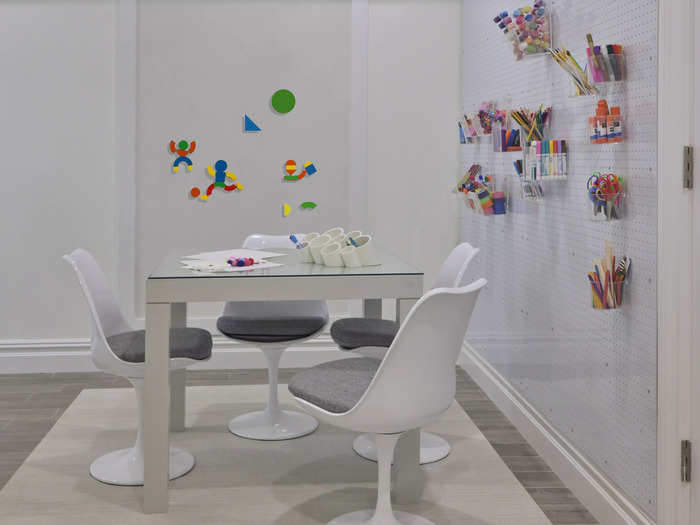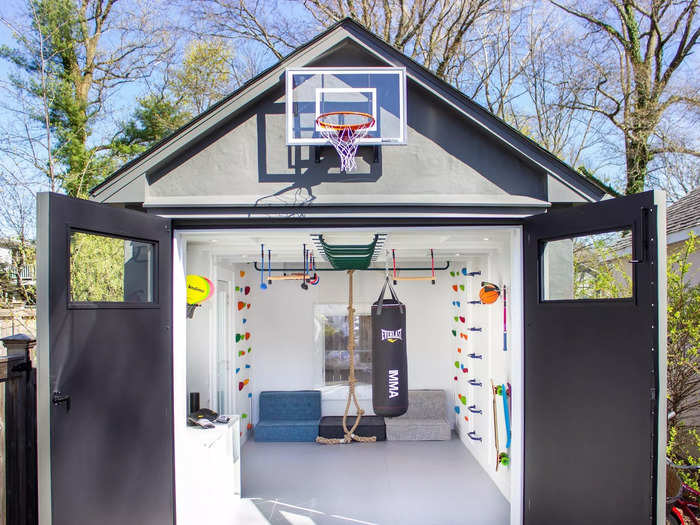Independent play is important for everyone in the family
Courtesy of Jane Beiles
This as-told-to essay is based on a conversation with Karri Bowen-Poole. It has been edited for length and clarity.
Almost any parent will tell you they wish their children played on their own a bit more. Independent play isn't just important for mom and dad's well-being — it's also a key component of child development. As a mom of three and former teacher, I think solo and peer play goes further for teaching our children about the world than any adult-led playtime.
So, I've made a second career out of building place spaces that facilitate active, independent play for tots, teens, and everyone in between through my business Smart Playrooms. Here are my tips for creating a long-lasting play space that your children will love.
Think about what you want to facilitate
Courtesy of Jane Beiles
When I meet with a new client, I ask them about what they want their kids to get from the space. This may be spending less time on screens, playing better with siblings, feeding a love for sports or performance, or giving children a sensory outlet.
Think about what your kids love and what you want them to do more of. Knowing your goals for the space will help you develop a design that works for your children.
Create zones
Courtesy of Jane Beiles
Classrooms, particularly for younger kids, are designed around centers. These are various spaces that serve a particular type of play: mirrors and hooks for dress-up, blocks for building, swings and balance beams for physical and sensory engagement, or a cozy reading nook.
When we create zones, we're steering children's behavior without them realizing it.
Clear the clutter
Courtesy of Jane Beiles
One of the biggest mistakes I see in playrooms is having too many toys. Kids — like adults — don't enjoy chaotic environments. Too many toys and too little open space will deter kids from being in the playroom, so it's essential to clear away clutter.
Limit your kids' input
Courtesy of Jane Beiles
I learned as a parent to only ask for my kids' opinions in limited settings, and I take that approach to playrooms. Rather than asking your children what they want today — like a certain character or color scheme — trust that you know how to build a space that will serve their innate interests, personality traits, and needs. Those core traits will stay the same over time, creating a playroom that can grow and develop with your children.
Utilize the walls and ceilings
Courtesy of Jane Beiles
Floor space is precious, especially since having room to move is so important for independent play. So, instead of putting everything on the floor, utilize the ceiling and wall spaces.
Hanging seats, floating shelves, rock walls, and other design techniques let you optimize floor space while still creating different zones for play.
Encourage movement
Courtesy of Jane Beiles
Many kids don't get enough physical movement, spending the day in school and the afternoon being shuffled between activities. So, give your kids space for physical play indoors. When children are presented with structures to climb, swing and balance on, they're less likely to spend time sitting in front of screens.
Think long-term
Courtesy of Jane Beiles
Teens need playrooms just as much as toddlers. So, if you're designing a space, add features that can adapt over time. If you're hanging a baby wing, consider reinforcing the ceiling so that you can one day hang a hammock for your teenager to lounge in. Or, think about how a craft area might later become a study nook
Keep it simple
Courtesy of Jane Beiles
Designing a smart playroom doesn't have to be expensive or complicated. Just stay focused on what you want from the space. Think about what you'd like your kids to do more of, and make it easy for them to do those things. That's the secret.

